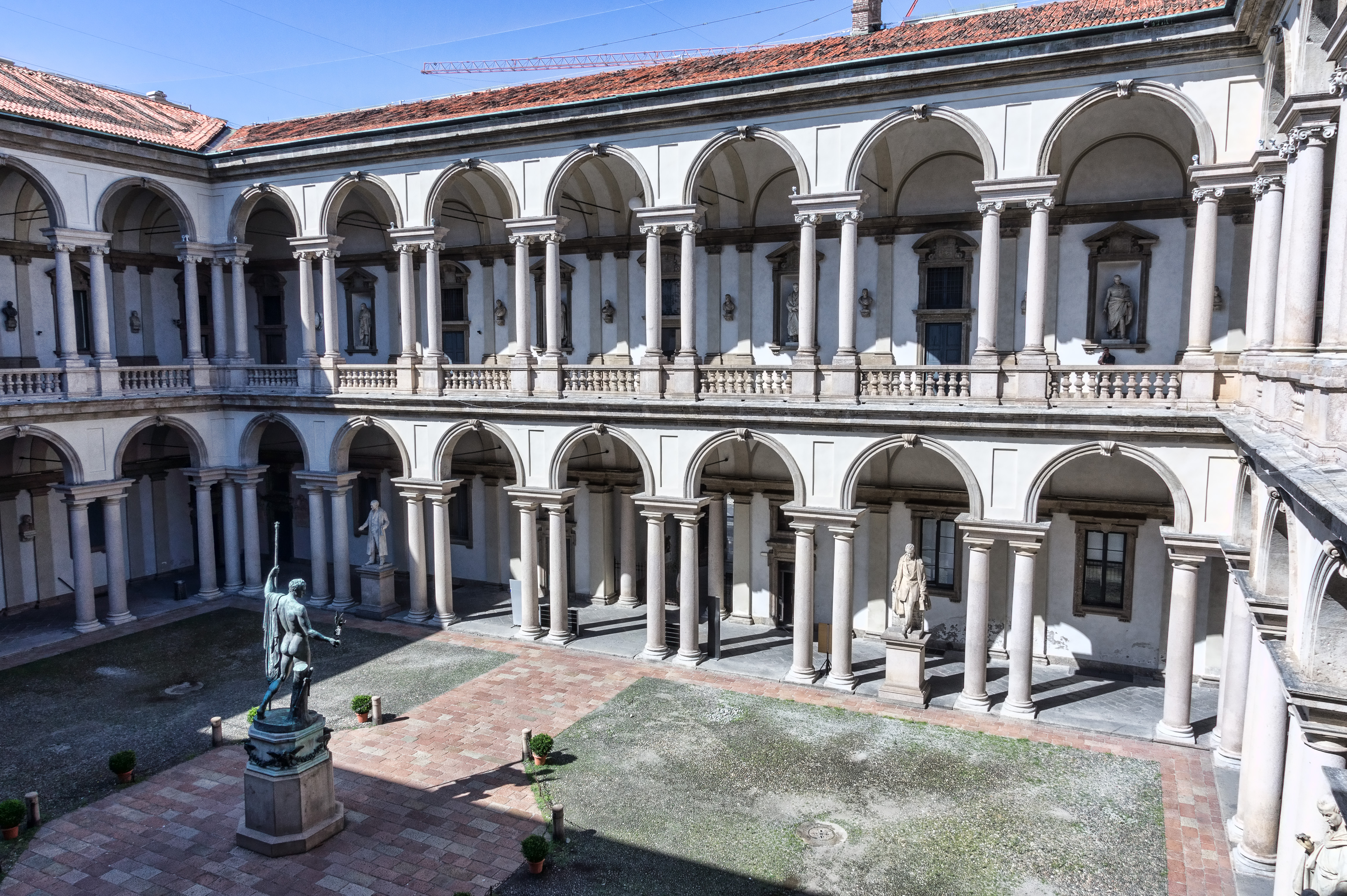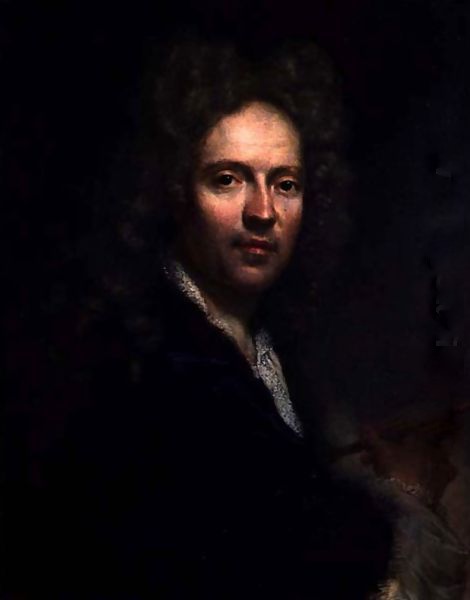|
Fortunato Pasquetti
Gerolamo Querini, Pinacoteca Querini Stampalia Fortunato Pasquetti (1690–1773) was a Venetian painter of the Rococo period. He is known for his formal portraits of royalty and Venetian Patriciate. He was born in Venice and died in Portogruaro. He trained under Niccolò Cassana. He painted a portrait of Charles VI, Holy Roman Emperor , house = Habsburg , spouse = , issue = , issue-link = #Children , issue-pipe = , father = Leopold I, Holy Roman Emperor , mother = Eleonore Magdalene of Neuburg , birth_date .... engraving after Pasquetti. References 1690 births[...More Info...] [...Related Items...] OR: [Wikipedia] [Google] [Baidu] |
Pinacoteca Querini Stampalia - Gerolamo Querini - Provveditore Generale Da Mar - Fortunato Pasquetti
A pinacotheca (Latin borrowing from grc, πινακοθήκη, pinakothēkē = grc, πίναξ, pinax, (painted) board, tablet, label=none + grc, θήκη, thēkē, box, chest, label=none) was a picture gallery in either ancient Greece or ancient Rome. The name is specifically used for the building containing pictures which formed the left wing of the Propylaea on the Acropolis at Athens, Greece. The Pinacotheca was located next to the temple of Athena Nike. Though Pausanias speaks of the pictures "which time had not effaced",Pausanias, ''Description of Greece''book I, chapter xxii, page 31, section 6 translated by J. G. Frazer (1898) which seems to point to fresco painting, the fact that there is no trace of preparation for stucco on the walls implies that the paintings were easel pictures. The Romans adopted the term for the room in a private house containing pictures, statues, and other works of art. In the modern world the word is often used as a name for a public art gal ... [...More Info...] [...Related Items...] OR: [Wikipedia] [Google] [Baidu] |
Rococo
Rococo (, also ), less commonly Roccoco or Late Baroque, is an exceptionally ornamental and theatrical style of architecture, art and decoration which combines asymmetry, scrolling curves, gilding, white and pastel colours, sculpted moulding, and ''trompe-l'œil'' frescoes to create surprise and the illusion of motion and drama. It is often described as the final expression of the Baroque movement. The Rococo style began in France in the 1730s as a reaction against the more formal and geometric Louis XIV style. It was known as the "style Rocaille", or "Rocaille style". It soon spread to other parts of Europe, particularly northern Italy, Austria, southern Germany, Central Europe and Russia. It also came to influence the other arts, particularly sculpture, furniture, silverware, glassware, painting, music, and theatre. Although originally a secular style primarily used for interiors of private residences, the Rococo had a spiritual aspect to it which led to its widespread use in ... [...More Info...] [...Related Items...] OR: [Wikipedia] [Google] [Baidu] |
Venice
Venice ( ; it, Venezia ; vec, Venesia or ) is a city in northeastern Italy and the capital of the Veneto Regions of Italy, region. It is built on a group of 118 small islands that are separated by canals and linked by over 400 bridges. The islands are in the shallow Venetian Lagoon, an enclosed bay lying between the mouths of the Po River, Po and the Piave River, Piave rivers (more exactly between the Brenta (river), Brenta and the Sile (river), Sile). In 2020, around 258,685 people resided in greater Venice or the ''Comune di Venezia'', of whom around 55,000 live in the historical island city of Venice (''centro storico'') and the rest on the mainland (''terraferma''). Together with the cities of Padua, Italy, Padua and Treviso, Italy, Treviso, Venice is included in the Padua-Treviso-Venice Metropolitan Area (PATREVE), which is considered a statistical metropolitan area, with a total population of 2.6 million. The name is derived from the ancient Adri ... [...More Info...] [...Related Items...] OR: [Wikipedia] [Google] [Baidu] |
Portogruaro
Portogruaro ( vec, Porto, fur, Puart) is a town and ''comune'' in the Metropolitan City of Venice, Veneto, northern Italy. The city is the centre of a district, made up of 11 ''comuni'', which form the Venezia Orientale with the San Donà di Piave district. History Portogruaro was officially founded in 1140, when the Archbishop of Concordia, Gervinus, gave a group of fishermen (Giovanni Venerio, Arpone, Bertaldo, Borigoio, Enrico Mosca, Giovanni Salimbene) the right to settle there and build a river port. A castle had existed on the site as early as the 10th century. In 1420, after centuries under Patria del Friuli, was conquered by the Republic of Venice. According to Bertolini the town's foundation could be coeval to the Concordia Sagittaria's one. Under the Venetians the town retained some autonomy and was able to expand economically up until the economic decline of Venice from the 17th century onwards. Following the upheavals of the Napoleonic Wars, Portogruaro was incorpora ... [...More Info...] [...Related Items...] OR: [Wikipedia] [Google] [Baidu] |
Niccolò Cassana
Niccolò Cassana (often called Nicoletto; 1659–1714) was an Italian painter born in Venice and active during the late-Baroque. His older brother Giovanni Agostino Cassana was also a painter. He trained with his father, Giovanni Francesco Cassana, a Genoese painter, who had been taught the art of painting by Bernardo Strozzi. He painted a ''Conspiracy of Catiline'' for the Gallery at Florence. Having painted portraits of the Medici court, and also of some of the English nobility, Nicoletto was invited to England, and introduced to Queen Anne, who sat to him for her likeness, and conferred on him many marks of favor. He died in London in 1714, having given way to drinking in his later years. One of his pupils was Fortunato Pasquetti. See also *Cassana (family) References * * Gallery Niccolo Cassana Anna Maria Luisa de Medici.jpg, Anna Maria Luisa de' Medici Niccolò Cassana - Portrait of Grand Prince Ferdinando de' Medici - WGA4529.jpg, Grand Prince Ferdinando de' Medici ... [...More Info...] [...Related Items...] OR: [Wikipedia] [Google] [Baidu] |
Charles VI, Holy Roman Emperor
, house = Habsburg , spouse = , issue = , issue-link = #Children , issue-pipe = , father = Leopold I, Holy Roman Emperor , mother = Eleonore Magdalene of Neuburg , birth_date = , birth_place = Hofburg Palace, Vienna , death_date = , death_place = Palais Augarten, Vienna , place of burial = Imperial Crypt , signature = Signatur Karl VI. (HRR).PNG , religion = Roman Catholicism Charles VI (german: Karl; la, Carolus; 1 October 1685 – 20 October 1740) was Holy Roman Emperor and ruler of the Austrian Habsburg monarchy from 1711 until his death, succeeding his elder brother, Joseph I. He unsuccessfully claimed the throne of Spain following the death of his relative, Charles II. In 1708, he married Elisabeth Christine of Brunswick-Wolfenbüttel, by whom he had his four children: Leopold Johann (who died in infancy), Maria Theresa (the last direct Habsburg sovereign), Mar ... [...More Info...] [...Related Items...] OR: [Wikipedia] [Google] [Baidu] |
1690 Births
Year 169 ( CLXIX) was a common year starting on Saturday (link will display the full calendar) of the Julian calendar. At the time, it was known as the Year of the Consulship of Senecio and Apollinaris (or, less frequently, year 922 ''Ab urbe condita''). The denomination 169 for this year has been used since the early medieval period, when the Anno Domini calendar era became the prevalent method in Europe for naming years. Events By place Roman Empire * Marcomannic Wars: Germanic tribes invade the frontiers of the Roman Empire, specifically the provinces of Raetia and Moesia. * Northern African Moors invade what is now Spain. * Marcus Aurelius becomes sole Roman Emperor upon the death of Lucius Verus. * Marcus Aurelius forces his daughter Lucilla into marriage with Claudius Pompeianus. * Galen moves back to Rome for good. China * Confucian scholars who had denounced the court eunuchs are arrested, killed or banished from the capital of Luoyang and official life duri ... [...More Info...] [...Related Items...] OR: [Wikipedia] [Google] [Baidu] |
1773 Deaths
Events January–March * January 1 – The hymn that becomes known as ''Amazing Grace'', at this time titled "1 Chronicles 17:16–17", is first used to accompany a sermon led by curate John Newton in the town of Olney, Buckinghamshire, England. * January 12 – The first museum in the American colonies is established in Charleston, South Carolina; in 1915, it is formally incorporated as the Charleston Museum. * January 17 – Second voyage of James Cook: Captain Cook in HMS Resolution (1771) becomes the first European explorer to cross the Antarctic Circle. * January 18 – The first opera performance in the Swedish language, ''Thetis and Phelée'', performed by Carl Stenborg and Elisabeth Olin in Bollhuset in Stockholm, Sweden, marks the establishment of the Royal Swedish Opera. * February 8 – The Grand Council of Poland meets in Warsaw, summoned by a circular letter from King Stanisław August Poniatowski to respond to the Kingdom's ... [...More Info...] [...Related Items...] OR: [Wikipedia] [Google] [Baidu] |
18th-century Italian Painters
The 18th century lasted from January 1, 1701 (Roman numerals, MDCCI) to December 31, 1800 (Roman numerals, MDCCC). During the 18th century, elements of Age of Enlightenment, Enlightenment thinking culminated in the American Revolution, American, French Revolution, French, and Haitian Revolution, Haitian Revolutions. During the century, History of slavery, slave trading and human trafficking expanded across the shores of the Atlantic Ocean, Atlantic, while declining in Russian Empire, Russia, Qing dynasty, China, and Joseon, Korea. Revolutions began to challenge the legitimacy of monarchical and aristocratic power structures, including the structures and beliefs that Proslavery, supported slavery. The Industrial Revolution began during mid-century, leading to radical changes in Society, human society and the Natural environment, environment. Western historians have occasionally defined the 18th century otherwise for the purposes of their work. For example, the "short" 18th cen ... [...More Info...] [...Related Items...] OR: [Wikipedia] [Google] [Baidu] |
Italian Male Painters
Italian(s) may refer to: * Anything of, from, or related to the people of Italy over the centuries ** Italians, an ethnic group or simply a citizen of the Italian Republic or Italian Kingdom ** Italian language, a Romance language *** Regional Italian, regional variants of the Italian language ** Languages of Italy, languages and dialects spoken in Italy ** Italian culture, cultural features of Italy ** Italian cuisine, traditional foods ** Folklore of Italy, the folklore and urban legends of Italy ** Mythology of Italy, traditional religion and beliefs Other uses * Italian dressing, a vinaigrette-type salad dressing or marinade * Italian or Italian-A, alternative names for the Ping-Pong virus, an extinct computer virus See also * * * Italia (other) * Italic (other) * Italo (other) * The Italian (other) * Italian people (other) Italian people may refer to: * in terms of ethnicity: all ethnic Italians, in and outside of Italy * ... [...More Info...] [...Related Items...] OR: [Wikipedia] [Google] [Baidu] |
Painters From Venice
Painting is the practice of applying paint, pigment, color or other medium to a solid surface (called the "matrix" or "support"). The medium is commonly applied to the base with a brush, but other implements, such as knives, sponges, and airbrushes, can be used. In art, the term ''painting ''describes both the act and the result of the action (the final work is called "a painting"). The support for paintings includes such surfaces as walls, paper, canvas, wood, glass, lacquer, pottery, leaf, copper and concrete, and the painting may incorporate multiple other materials, including sand, clay, paper, plaster, gold leaf, and even whole objects. Painting is an important form in the visual arts, bringing in elements such as drawing, composition, gesture (as in gestural painting), narration (as in narrative art), and abstraction (as in abstract art). Paintings can be naturalistic and representational (as in still life and landscape painting), photographic, abstract, narrativ ... [...More Info...] [...Related Items...] OR: [Wikipedia] [Google] [Baidu] |


.jpg)


.jpg)
